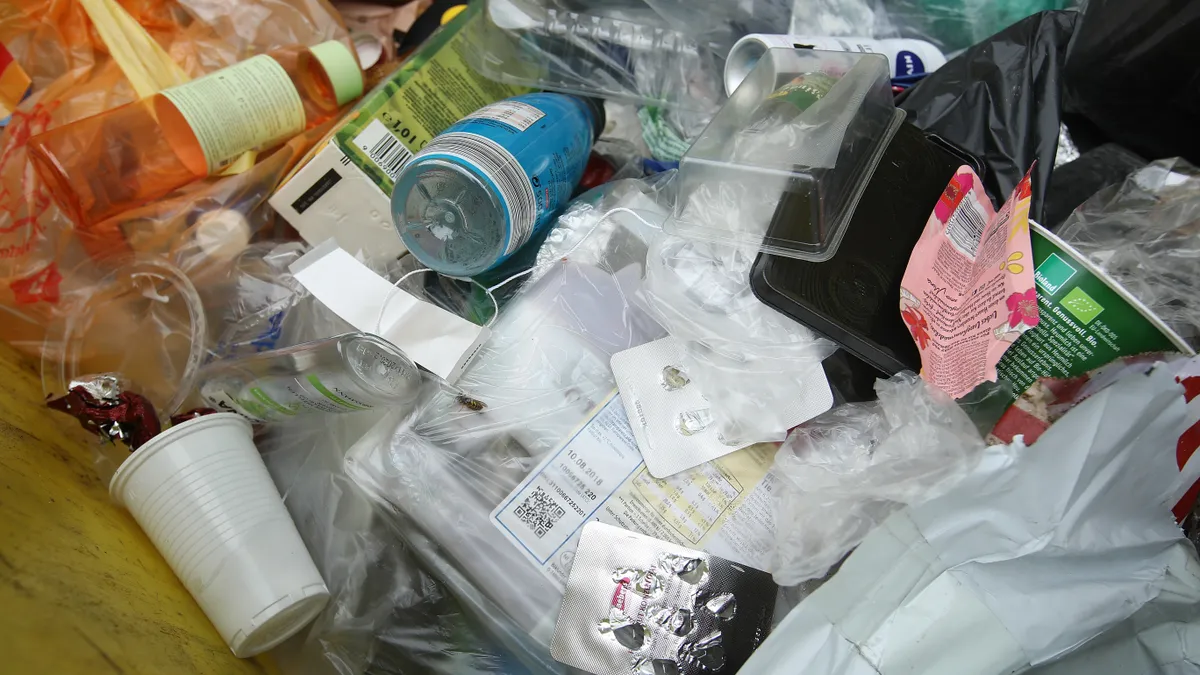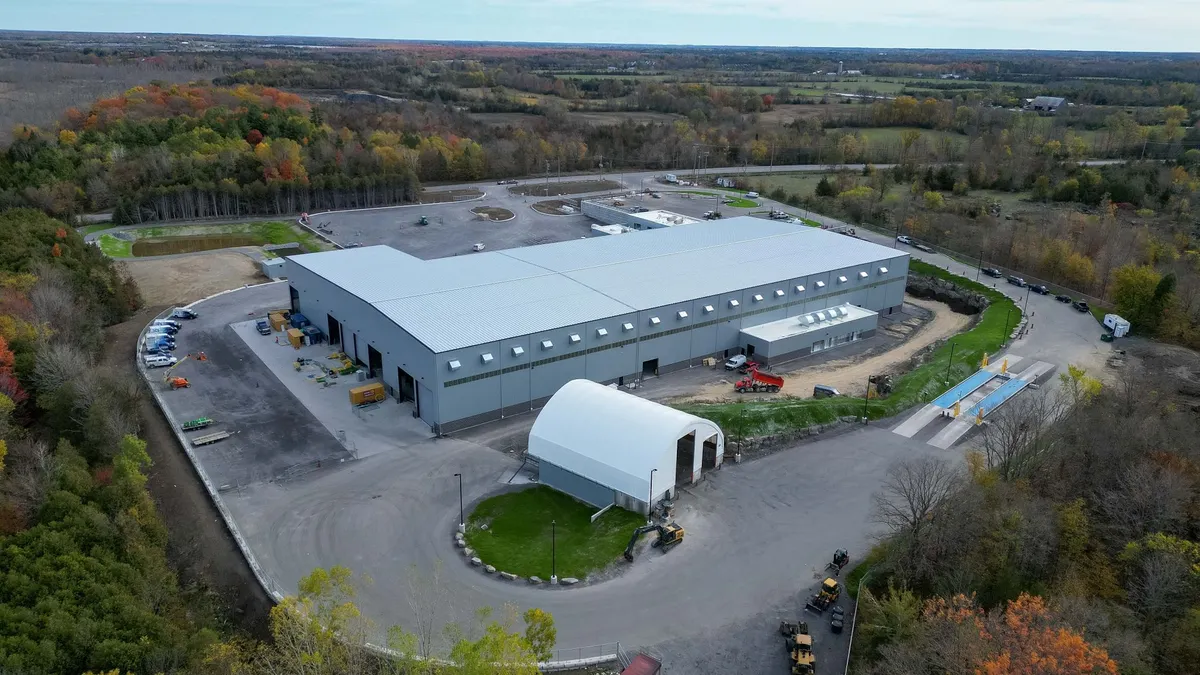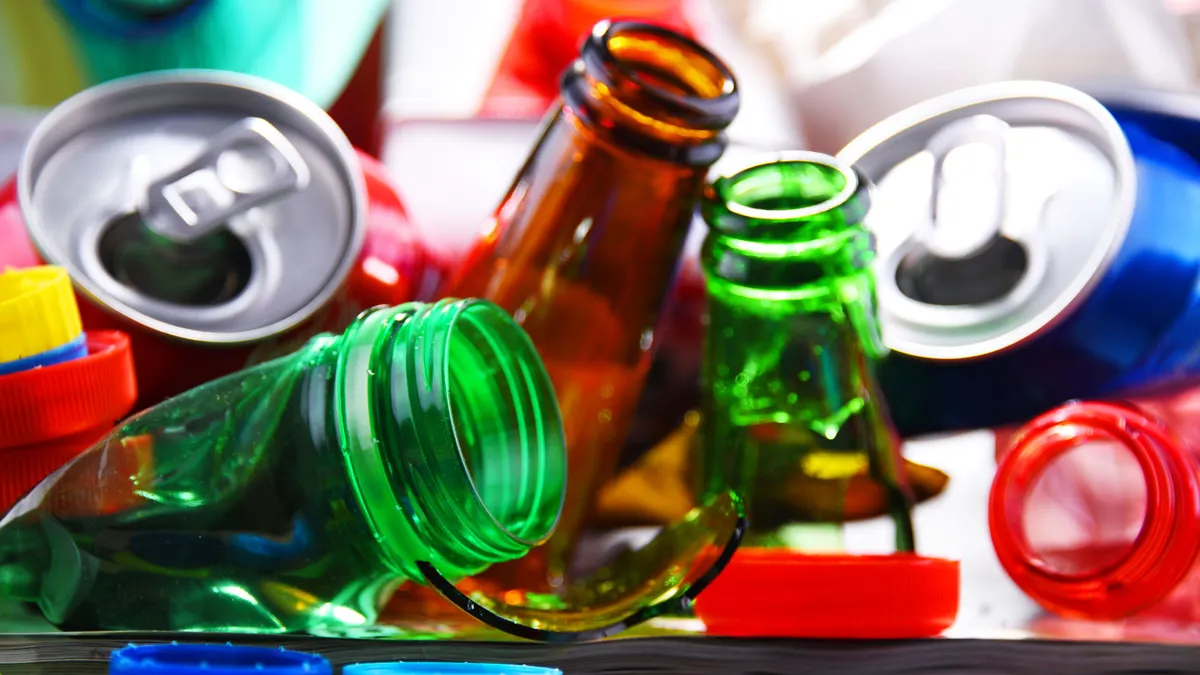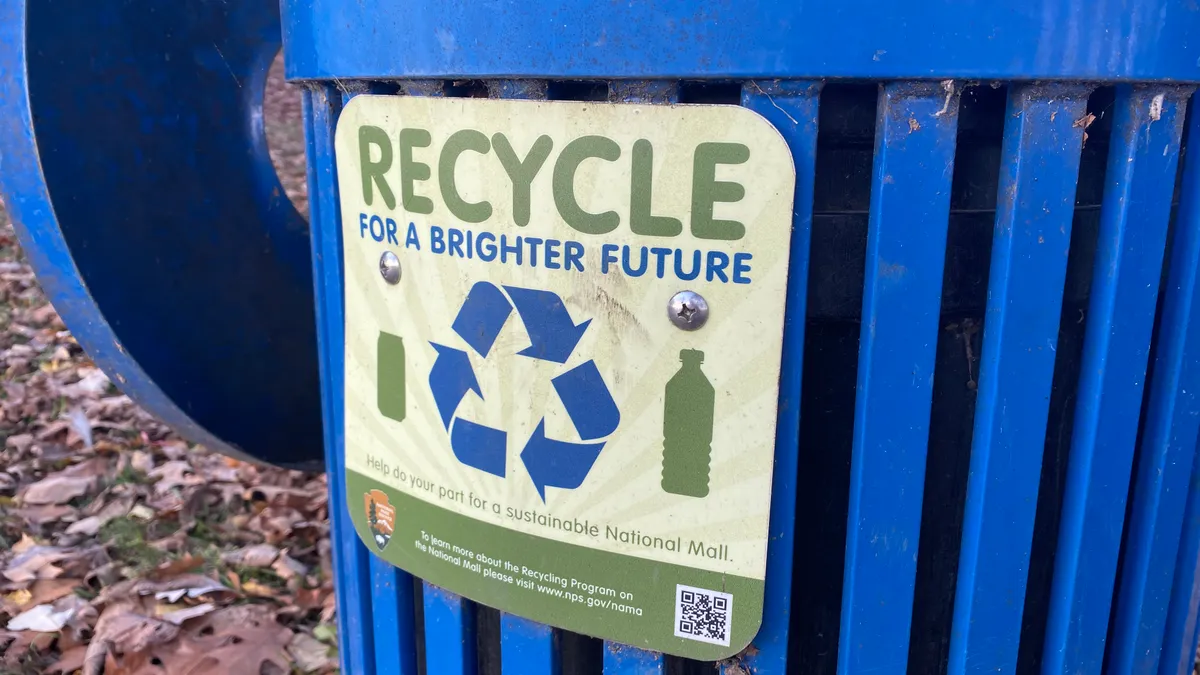Chemical recycling, sometimes known as advanced recycling, has long been a controversial practice in the recycling arena. At the Southeast Recycling Development Council annual meeting Dec. 1, representatives from Eastman and PureCycle, two companies that do chemical recycling, made the case for how their businesses fit into broader circular economy efforts to reduce virgin plastic use and keep waste out of landfills and waterways.
Their effort comes amid ongoing state and federal policy discussions that could help or hinder the future development of chemical recycling. Some environmentalists want to pause chemical recycling facilities over concerns that the processes they use are harmful to the environment or enable companies to create fuels from plastic instead of focusing on how to replace virgin resin with recycled resin.
Here are some takeaways from the discussion:
Chemical recycling companies tout their circular economy role
Eastman and PureCycle representatives highlighted plans to expand their chemical recycling businesses in the Southeast United States. Both speakers told SERDC attendees that chemical recycling technology needs to scale up to accommodate increased demand for outlets for hard-to-recycle plastics. Eastman aims to recycle at least 250 million pounds of plastics annually by 2025, while PureCycle’s goal is to ramp up to a billion pounds of polypropylene recycling capacity by that same year.
“We're going to need to have additional technologies that can handle a broader set of materials than we can handle today,” said Holli Alexander, strategic initiatives manager of global sustainability at Eastman.
Eastman uses a technique it calls carbon renewal to break down a “broad mix” of plastic types to the molecular level. Its Kingsport, Tennessee, facility has used this process for several years to process feedstock from companies such as California-based Circular Polymers, which supplies polyester fiber from post-consumer carpet.
Eastman plans to open an additional chemical recycling plant at its Kingsport site, this time using a technology called methanolysis, which Alexander said is better suited to recycling materials like carpet. Eastman plans to finish construction within a year and to start production in the first quarter of 2023.
Meanwhile, Tamsin Ettefagh, chief sustainability officer at PureCycle, touted her company’s plans to open an advanced recycling facility near Irontown, Ohio, as well as a plant in Augusta, Georgia. It has plans for future facilities in Japan and Korea, she said. Ettefagh characterizes PureCycle’s technology as “advanced recycling,” not chemical recycling, because the proprietary process uses a solvent to “purify” polypropylene by removing colorants or additives and does not break down the molecular structure of the plastic.
PureCycle’s main feedstock and product is polypropylene, a complex material in the recycling world. Not all MRFs accept it or consider it recyclable because it has more limited markets than HDPE or PET. One of PureCycle’s selling points, she said, is that its advanced recycling technology can turn hard-to-recycle PP products like black-colored plastics into a clear resin that is more desirable for products like food packaging and industrial and automotive applications.
State and federal recycling policy changes will play a role
Eastman and PureCycle representatives said U.S. federal and state policy will significantly shape the fate of certain plastic commodities. They see chemical recycling and advanced recycling as options for managing plastics to match swiftly changing policies.
Ettefagh pointed to fast-approaching goals laid out by the U.S. Plastics Pact, a consortium led by The Recycling Partnership and World Wildlife Fund. By 2025, pact participants pledge to ensure their packaging has at least 30% recycled or bio-based content. Among the pact's other goals, participants plan to create a list of “problematic” packaging and eliminate those products, which Ettefagh says could influence resin markets and the flow of material through the recycling stream. “Certain resins are going to be considered unnecessary, and certain types of packaging are going to be considered unnecessary, and that's going to affect what we put in the recycling bin,” she said.
Significant state policy changes have already created markets for hard-to-recycle items such as carpet, which PureCycle also processes, she said. California’s extended producer responsibility policy for carpet is keeping the material out of the landfill, “and it lit up a supply chain for Eastman to be able to recycle it,” she said.
Some recently passed state laws have reclassified chemical recycling as a manufacturing process rather than as solid waste management, which proponents say helps recognize the plastic processing technology as economically feasible and important to the local economy. Environmental groups say the laws, passed in Virginia and other states this year and backed by the American Chemistry Council, will allow companies to sidestep important solid waste regulations.
Meanwhile, the high-profile Break Free From Plastic Pollution Act, a federal bill meant to curb plastic pollution, aims to pause new permits for plastics production facilities and chemical recycling plants. Environmental groups and other supporters worry chemical recycling will cause negative environmental effects or prioritize the creation of fuel from plastic feedstock instead of focusing on plastic-to-plastic recycling.
Alexander acknowledged that chemical recycling “comes with some environmental justice concerns” and said communities often have questions about whether chemical recycling processes will contaminate nearby waterways or create harmful air emissions. Alexander said Eastman is “really try[ing] to be transparent and clear to let folks know what's happening in these manufacturing processes,” but some environmentalists say more could be done.
In a 2020 report on chemical recycling companies in the U.S., the Global Alliance for Incinerator Alternatives criticized Eastman for “lacking publicly available information” on its plastic-to-plastic recycling technology. More broadly, GAIA believes that no existing chemical recycling companies are completely successful in their stated goals of recovering plastic to produce new plastic.
Chemical recycling has also faced criticism from activists who believe more funding and resources should go into reducing total plastic manufacturing and use instead of finding an end market for the material once it’s produced. The National Academy of Sciences released a Congressionally-mandated report in early December on the United States’ contribution to global plastic pollution. The report’s first recommendation is for the country to “substantially reduce solid waste generation (absolute and per person) to reduce plastic waste in the environment.”
But Alexander says chemical recycling’s focus on managing waste is a critical part of the circular economy model. “If our goal continually is, 'How do we keep stuff out of the bin?', then we're probably not going in the right direction to really get to where we can create circularity for this material,” she said.
Controversy over chemical recycling also made its way into the U.S. EPA’s recently released National Recycling Strategy, a document laying out steps to achieve a 50% recycling rate by 2030. The final version of the document acknowledged chemical recycling as a possible waste diversion strategy, a detail that was not mentioned in the draft version of the plan.
In a recent interview with Waste Dive, Carlton Waterhouse, the EPA’s nominee for assistant administrator for the Office of Land and Emergency Management, said the mention doesn’t mean the EPA endorses the practice. Chemical recycling deserved to be included in the report’s scope, he said, because of recent studies in Europe pointing to possible benefits.
“We want to hear about what is possible, and after we get more information, we'll be able to make a better decision about whether or not it's an appropriate part of the ultimate strategies that we're going to employ,” said Waterhouse.
Chemical and mechanical recycling proponents seek consensus around recycling infrastructure
Both Ettefagh and Alexander said their technologies aren’t a replacement for traditional mechanical recycling, but rather they're a complementary strategy meant to target hard-to-recycle and low-quality plastics that wouldn’t normally make it through the mechanical recycling process.
Mechanical recycling is a tried-and-true strategy for many applications, such as PET collection, Ettefagh said, but advanced recycling for items like yogurt cups can do a better job at eliminating impurities such as smells and resin colors that mechanical recycling isn’t designed to tackle.
Alexander said more needs to be done to upgrade and improve recycling systems in the U.S. beyond simply expanding chemical recycling capacity. Most recycling organizations agree that recycling collection and processing infrastructure, including mechanical recycling, needs improvement, she said. Alexander pointed to Eastman’s plant location in Kingsport, a town that does not offer curbside recycling collection for residents, as an example.
Companies must also focus on how to more efficiently recycle in public areas, Ettefagh added. Curbside recycling makes up a very small portion of PureCycle’s feedstock, and the company is partnering with sports teams like the Cleveland Browns to collect and recycle plastic generated during games. It’s also working with the stadium to make sure its plastic service ware is made of PP so PureCycle can recycle it in the future.
“We need to work beyond curbside recycling to create recycling opportunities and mechanisms for consumers that are going to last,” she said.


















